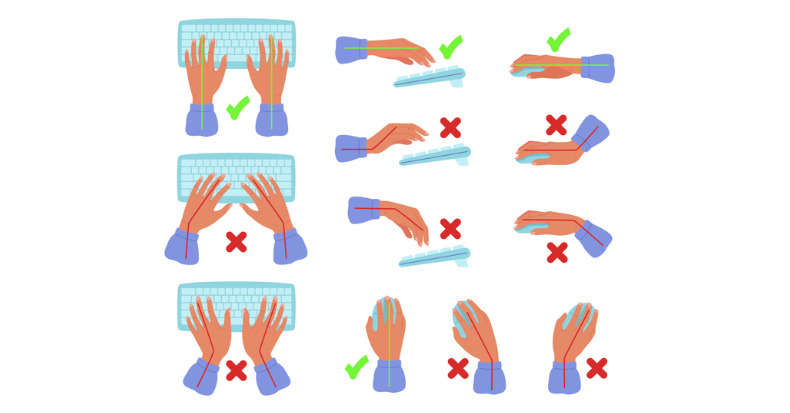The wrist is very flexible, and the reason the wrist is so supple is because it’s made up of eight small carpal bones that are lined up in two rows of four bones each. Along with the transverse carpal ligament, these rows of carpal bones form an actual tunnel in which nine muscle tendons (and their sheaths) and the median nerve pass. If inflammation or swelling occurs that reduces the space in the carpal tunnel, then the median nerve can become compressed and restricted, which stimulates the various symptoms commonly linked to carpal tunnel syndrome (CTS). Another factor that can limit space in the carpal tunnel has to do with hand positions.
In a 2023 study, researcher utilized high-frequency, diagnostic ultrasound (HFDU) to specifically look at median nerve position changes and cross-sectional area of the nerve when the wrist is bent upward (dorsiflexion) and downward (palmar flexion) in 85 patients (110 affected hands) diagnosed with mild (n=38), moderate (n=30) and severe (n=42) CTS as well as 25 healthy control subjects (50 hands). Compared with the control wrists, the CTS-affected wrists exhibited much greater median nerve compression against the floor of the tunnel (the transverse carpal ligament) in both bent wrist positions. The researchers also used a diagnostic technology called nerve conduction velocity to confirm that this compression at the end-ranges of wrist flexion and extension are associated with dysfunction of the median nerve.
While this finding is interesting, it just reinforces what many healthcare providers already know about CTS: symptoms worsen at the end ranges of motion, and prolonged, awkward wrist postures should be avoided. That’s why one of the most common tools used to manage CTS is a nocturnal wrist splint to prevent the wrist from bending during sleep. However, it’s generally not recommended to wear a wrist splint at all times as immobilization could lead to deconditioning of the muscles in the region and worsen the patient’s situation.
In addition to avoiding prolonged bending of the wrists, CTS patients are also instructed to try to keep the wrist in a neutral position, take frequent breaks, and avoid high vibration exposure when performing hands-on work or hobby-related tasks because it can increase inflammation in the carpal tunnel and exacerbate symptoms and slow recovery.
Successful management of CTS may also involve addressing non-musculoskeletal factors that can promote inflammation or swelling in the wrist, such as diabetes. Patients may also receive advice on inflammation-promoting foods to avoid or supplements to take to reduce inflammation in the body. Your chiropractor will also assess the full course of the median nerve starting at the neck to make sure there are no other areas in which the nerve’s motion is restricted since it’s not uncommon for this to occur in multiple sites.




